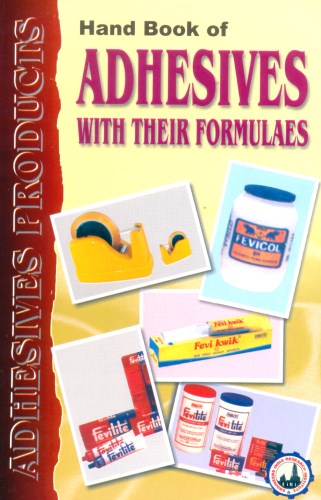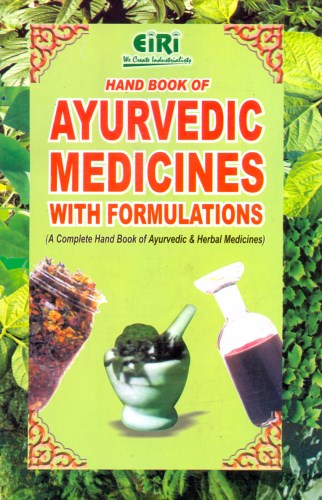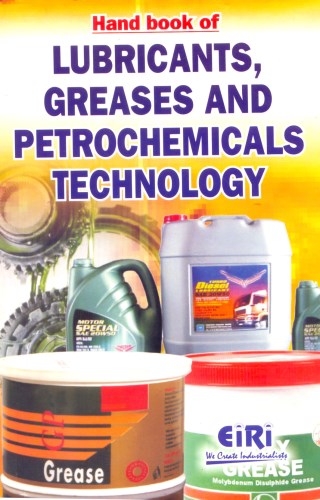Description
THERMOSETTING ACRYLIC EMULSION
- Introduction
- Acrylic resin
- Thermoplastic Solution (TPA)
- Thermosetting Solution (TSA)
- Thermoplastic dispersion i.e. Acrylic Latex
- Acrylic Emulsions
- Various methods of synthesis of thermosetting acrylic coatings (resin system/coating)
- Aqueous systems
- Commonly used acrylic monomers
- Various film properties obtained by using appropriate monomers
- Non aqueous systems
- Hybrid systems
- Some of the important ASTM standards pertaining to paint industry
- Thermal and photo degradation of acrylic resins
METALLIC POWDER COATING
- Introduction
- Effect pigments
- The metallic effect
- Particle size
- Particle shape pigment morphology
- Particle size distribution
- Pigment orientation
- Flop effect
- Leading and non leafing metallic pigments
- Incorporation of metallic pigments
- Extrusion/grinding
- Dry blending
- Bonding
- Bonding process
- The process
- Process stage
- Master Batch Mixer
- Safety
- Cooler mixer
- Determination of bonding quality
- Powder vs. liquid
LEVELLING AGENTS
- Introduction
- Surface tension
- The coheslve forces between the molecules at the surface are not evenly distributed on all sides as
- compared to the molecules in the inner
- layer, surface tension is the result of the
- unbalance forces.
- Total surface fension with relation to dispersive surface tension and polar surface tension
- Inter molecules forces
- London Dispersive Forces
- Example of a Helium atom illustration of London Dispersive Forces
- Influence of shape on molecules London dispensive Forces
- Dipole forces/moment
- The creation of Dipole dipole charges
- Influence of molecule geometry on dipole molecule
- Hydrogen bonding
- Creation of Diupole dipole interaction among molecules that have dipole moment
- Examples of the electric dipole moment
- Examples for Hydrogen bonding formation in water
- Tonic bonding (Not covalent bonding)
- Examples of salts with ionic bonding after neutralization
- Comparing all forces
- Comparison chart on different forces
- Surface tension of some common materials used in coatings
- Surface tension of common materials involve in coating at 20oC
- Interfactial surface tension
- Determination of surface tension
- Determination of Liquid surface tension
- gD and gP value
- Method of static surface tension
- Lecomte du Nouy
- Method of static surface tension
- Lecomte du Nouy
- Demonstration of the Withelmy Plate method
- Demonstration of Lecomate Du Nouy method
- Fowkes Equation on calculating the interfacial surface tension of solid liquid.
- Withelmy Plate
- Pendant Drop method
- Method of dynamic surface tension
- Bubble Pressure Method
- Instrument use to perform the pendent drop method
- Determination of solid surface tension
- Surface tension influent on coating
- Leveling and orange peel
- Surface tension on leveling
- Leveling equation (Newtonian liqid)
- Relation of surface tension, film thickness and viscosity on levelling time
- Flat and wavy surface
- Relation of surface tension of the paint and film thickness and time allowed to achieve good leveling
- Surface tension gradient influence on leveling
- Surface tension gradient influence in leveling
- Crater and fish eyes
- Substrate wetting
- Edge crawling framing effect
- Telegraphing and ghosting
- Solvent evaporation
- Wet paint
- Framing defect created
- Bernard Cells
- Air draft sensitivity
- Over spray
- Polymers that act as low surface tension surfactant in coating slip and leveling agent
- Polysiloxane
- Pure polydimethylsiloxane
- Branch/comb modified polysiloxane
- Branch or comb type of Polysilcxane
- Alkyld with CS-C18
- End modification Polysilcxane
- Properties of the silicone according to the parameter
- Properties of the silicone according to the parameter
- The slip performance of silicone
- Types of slip
- Determination of slip
- Self made slip angle measurement
- Scientific Instrument for slip determination
- Dilemma of silicone
- Overcoat adhesion problem
- Contamination
- Inner Bubble for PU
- Foam stabilizing effect
- Low surface tension and good compatibility with system
- Foam stabilizer
- Additional information on Polysiloxane
- Improve intercoat adhesion by using Polysiloxane
- Non Silicone leveling agent modified acrylic polymer
- Types of Acrylic based flow agent
- Straight acrylic with alky, polyester or polyether modification
- Comparing performance of a Polysiloxane and polyacrylate
- Comparison of the properties of a fluorocarbon and polyacrylate
- Comparison of the properties of Polysiloxane and fluorocarbon modified Polyacrylate
- Properties of Polysiloxane, Polyacrylate and Fluorocarbon modified Polyacrylate
- Polyacrylate with Fluorocartion modification
- Comparison of the avidity of Polysiloxane, Polyacrylate and Fluorocarbon modified
BALL POINT PEN & INKS
- History
- Background
- Raw materials
- Nancy EV Bryk
- The Manufacturing Process
- Making the ink
- Stamping and forming
- Molding the housing
- Ink filling and assembly
- Final assembly, packaging and shipping
- Quality Control
CERAMIC TILE ADHESIVES MODIFIED WITH DISPERSIBLE POLYMER POWDERS
- Thick versus thin bed laying technique
- Advantages of dispersible polymer powders as polymeric binder
- Interface between a polymer modified ceramic tile adhesive on a vitrified tile
- the polymer films at the interface between the porcelain tile surface
- and the cementitious mortar can be seen clearfy
- Summary
- Advantages of polymermodified tile adhesives
- Vinnapas dispersible polymer powders
CARBOMER RESIN
- Reactivity
- Product application
- Cosmetic use
- Pharmaceutical use
- Chemical and industrial specialities
- Safety
- Process Outline
- Indian producer
- Brand name
- Important Global Manufacturers
- New products launched by Noveon
CNSL PHENOL FORMALDEHYDE
- Introduction
- experimental
- Materials
- Specification of CNSL (IS-840)
- Specifications of the Ketonic (Cyclohexanone formaldehyde)resin
- Synthesis
- CNSL Phenol formaldehyde resin formulation for laboratory preparation
- FTIR Analysis and Interpretation
- Morphological study of blends
- Driers
- Tests carried out for the study of coating properties
- Results and Discussion
- Drying Time SEM of 50-50 (% wt.) concentration of Blend
- SEM of 30.70 (% wt) concentration of Blend
- SEM of 70:30 (% wt) concentration of Blend
- Ketonic (Cyclohexanone formaldehyde) resin
- Coating properties of CNSL Phenol formaldehyde Ketonic resin blends
- Chemical resistance
ADHESION OF COATING ON PLASTICS
- Introduction
- Theory of adhesion on plastics
- Mechanical theory
- Chemical bonding theory
- Diffusion Theory
- Main characteristics of the plastic substrates affecting adhesion
- Substrate weting
- Substrate swelling
- Surface topography
- Pretreatment
- Plasma discharge
- Flaming
- Chemical
- Solvent clearing
- Adhesion promoters
DISPERSING WITHOUT GRINDING (PAINT MACHINERY)
- Introduction
- Comminution processes: True Comminution and Dispersing
- Economic Dispersionizer OMEGA Operating principle
- Design of the OMEGA Economic Dispersionizer
- Design of NETZSCH Dispersion Device
- Model Sizes
- Advantages
- Areas of Application
- Application example Titanium dioxide
- Titanium dioxide suspension after one pass in the OMEGA
HYDROPHILIC POLYISOCYANATES
- Polyisocyanate:how to make it hydrophilic
- Solubility parameters of hexamethylene trimer or bluret
- Experimental
- Hardness
- Characteristics of the hardeners
- Starting point formulations
- Results
- Emulsification ability
- Emulsification into water
- Formulations
- Emulsification into the resin part
- Visual aspect of formulations regarding the mixing time and the nature of the polyisocyanate
- Application properties
- Influence of the nature of the polyisocyanate on the VOC content
- VOC, gloss and Koenig hardness of coatings made with Easaqua XI.600 and polyisocyanate
- Water resistance
- Contact angle of a drop of water with the surface
- Contact angle measurement of water on 2K water borne coatings (initial and after 3 days at 100% RH and 50oC
- Evaluation of adhesion with cross hatch and tape adhesion test
- Corrosion resistance
- Visual aspect of the coatings after cross hatch and tage adhesion test
- Visual aspect of coated panels after 350 hours of salt spray test
POLYURETHANE INK BINDER FOR LIQUID INKS
- Introduction
- Chemistry
- PU ink binder characteristics
DISPERSING AGENTS
- Introduction
- Dispersion Process
- Replacement of air and water by the resin
- Selection criteria for dispersing agents
- Paint industry
- Low molecular weight Dispersing agents
- High molecular weight dispersing agents
- Common issues solved by dispersants
- Textiles
- Desizing to improve their strength and blending behavior during the weaving process
- Mercerizing for improvement of dyeability, strength, and appearance of cotton fiber
- Foods
- Pharmaceuticals
- Other industrial aplications
SILICONE RELEASE COATINGS
- Introduction
- Release coating markets
- Cure chemistries and delivery systems
- Development, progress and trends
- Catalyst systems
- The Development History of Silicone Release coatings
- Inhibitors
- Comparison of Cure systems
- High release additives
- Factors affecting release performance
- Humidity and substrate stiffness
- Temperature
- Testing
- Raw materials
- Finished product testing
- System selection
- Solvent Based vs. Solventless vs. Emulsion Delivery Systems
- Comparison of Delivery Systems
- Advantages
- Solvent based
- Emulsion
- Solvents
- Disadvantages
- Solvent based
- Emulsion
COATED REINFORCED TMT BARS USED IN CONCRETE STRUCTURE
- Inroduction
- Experimental procedure
- Sample preparation
- Experiments
- Processing of Polarization data for the estimation of Ecorr and icorr
- Corrosion data of the Coated specimens
- Results and Discussions
SPECIAL PURPOSE INKS
- Thermochromic inks
- Application
- Color Information
- Color changing Temperature Range
- Security Inks
- Bleeding Inks
- coin reactive inks
- Erassable ink
- Pen reactive ink
- Heat Reactive Irreversible
- Visible Infrared inks
- Optically Variable Inks
- Penetrating Ink
- Photochromic Ink
- Solvent/Chemical Reactive Inks
- Water fugitive ink
- UV Invisible Fluorscent Inks
SELF HEALING COATINGS
- Introduction
- Self healing concept
- Different methods of self healing
- Ring opening metathesis polymerization
- Polydimethylsiloxane based self healing
- By incorporation of AL203 No.183
- Using colloidal silica
- Incorporation of microcapsule in the coatings
- Brief idea of the base used for experiments
- Smart self healing nanotechnology coatings
- New approach towards developments in self healing coatings
- Self healing elastomer nanocomposites
- Research line
- Benefits of self healing coatings
- Applications of self healing coatings
- Automotive coatings
- Marine Coatings
- Coatings for defence
- Coatings for glass
UNSATURATED POLYESTER RESIN
- An example of a GC-FID profile of the acidic fraction and rosin on a TC-1 column
- An example of GC-FID profile of the acdic fraction and rosin on a TC-5 column
- Composition of Acidic fractions eluted on TC-1 and TC-5 columns
- Composition of Rosins eluted on TC-1 and TC-5 columns
- An example of a GC-FID profile of the acidic fraction and rosin on a TC-5 column (Isothernal temperature programme
- Experimental
- Materials
- Technique
- Synthesis of unsaturated polyester of rosin
- Measurements
- Curing exotherms
- Testing of the coatings
- Results and discussion
- Synthesis of UPE resins
- Molecular weight of the produced UPE and their hydroxyl
- Curing exotherms
- Curing exotherms of UPE with vinyl ester resins
- Curing parameters of APAUP1 with AEMPAE and MEMPAE at different temperatures
- Furing parametes of APAUP-2APAUP6 with AEMPAE at different temperatures
- Curing DSC measurements
- DSC thermal characteristics of cured UPE resins with styrene
- Evaluation of cured resins for coating applications
- Coating tests of UP resins cured with styrene and AEMPAE and MEMPAE curing agents
- Chemical resistances of cured UPE/VE systems
- Chemical resistance tests of UPE cured with AEMPAE and MEMPAE at different mixing ratios
MARINE BIO-FOULINGS (COATING)
- Process of marine bio fouling
- Parameters effect on bio fouling growth
- Geographical location
- Operating pattern of the vessel/Speed
- Temperature of water
- Salinity/pH/Alkalinity
- Pollution and oil greases contamination in coastal water
- Review of conventional antifouling paint
- Soluble Matrix Type first generation antifouling
- Leaching action of soluble matrix type A/F
- Diffusion or, insoluble matrix type or, contact leaching second generation antifouling
- Controlled depletion type (CDP) third generation antifouling
- TBT based Self polishing copolymer (SPC) Fourth generation antifoulings
- New generation tin free antifouling
- TBT free self polishing copolymer (SPC)
- Self Polishing Copolymer System
- Controlled release mechanism of TBT copolymer by hydrolysis
- Copper Acrylate SPC
- Zinc Acrylate SPC
- Silyl Acrylate SPC
- Ion exchange SPC
- sPC Mechanism
- Biocidal free foul release
- Molecular structure of a cross linked poly (dimethylsiloxane)
ACRYLIC BINDERS
- Solvent borne alkyds
- Odor and VOC
- Slow Drying
- Reduced Formulation Flexibility
- Poor UV Resistance
- Higher Operational Costs
- Gloss paints
- Good Contrast gloss
- Good Contrast gloss levels
- Flexibility and Blocking Resistance
- Excellent adhesion
- Coalescent Demand
- Fundamental Studies
- The picture showing the morphology of the coreshell (half moon type structure of the Acronal PA 510
- The half moon structure of Acronal PA 510 gives very Good blocking resistance to the paint film without losing flexiblity
- The chart shows the gloss levels of Acronal PA 510 versus the solvent based alkyd system
- The picture shows the adhesion of a gloss paint on an aged alkyd with
- Acronal PA 510 and competitor acrylic binders with standard adhesion promotion techniques,
- Acronal PA 510 shows the best adhesion on such surfaces
- The picture shows excellent durability of Acronal PA 510 when exposed for 3 years on a wooden panel
VINYL ACETATE ETHYLENE COPOLYMER EMULSIONS
- Vinyl acetate ethylene copolymer structure
- The fundamentals of VAE technologyStabilization system of polymer chains achieved through surfactants
- Impact of co-monomers on Tg of VA Copolymers
- Improved performance
- Low odor paints and coatings
- Benefits in applications and industry
- Structural comparison of vinyl acetate ethylene (VAE) and vinyl acrylic butyl acrylate (VABA) copolymers
MEDIUM LUSTRE PRIMER SURFACER FORMULATION
- Formulation for 100 kg
- Stage dispersion
- Stage Grind till H.G. 4 +
- Stage Discharge
- Stage MTO or Resin or toluene 4000
FORMULATION OF OFFSET PRINTING INK
- Introduction
- Materials and Methods
- Materials Used
- Preparation of Varnish
- Preparation of Ink
- Varnish Formulation
- Ink Formulation
- Tests and Measurements (7-8)
- Results and Discussion
- Properties of Vegetable oils
- Properties of Varnishes
- Properties of Inks
- Duct freshness of the Inks
- Print and Post Print Properties of the Printing Inks (Prufbau/Gloss Art Paper/30 degrees C)
NON ISOCYANATE PU
- Properties of NIPU at a glance
- Synthesis
- From glycerin carbonate Intermediates
- Synthesis of carbonates functional acrylate
- via glycerin chloroformate
- Via Vinyl Ethylene Carbonate
- Effect of solvent on the incorporation of CO2
- Incorporation % of CO2 into PGMA, catalyzed by different Lewis acid catalysts
- Synthesis of amine oligomers
- Targeted Parameters
- Reactivity of Cyclocarbonate groups with Amines
- Effect of solvent on the kinetics
- Aplication comparative advantages over conventional polyurethane
- Coatings
- UV stable coatings
- Adhesive and sealants
- Corrosive passive adhesives were prepared by a new method of their synthesis the method of multiplication
- IPN and nanocomposites
- Polyurethane foam
- Thermo stability and some properties of polymers
RB OIL BASED RESIN
- Introduction
- Water thinable vegetable oils
- Material and methods
- Materials
- Malenization of Unsaturated Oil
- Neutralization of Malenized Oil
- Curing Reaction
- Preparation of HEFA
- Malenization of KBO
- Neuralization of malenized oil with triethyl amine
- Stoved film properties of the stoving compositions
- Composition and chemical characteristics of malenized RBO
- Preparation of stoving agents
- Characterization of coatings
- Result and discussion
- Physical properties of malenized RBO-HEFA based stoving composition
- Mechanical properties
- Chemical resistance
- Solvent and water resistance
- IR Spectrum
WATERBORNE POLYURETHANE COATINGS
- Introduction
- Comparison of conventional & waterbone polyurethane coatings
- Applications
- Basic mechanism
- Hydrophilic polyisocyanates
- Water bome 2K PU approach
- Steps to be used to arrive at a perfect coating result
- Bayhydur crosslinking agent
- Polyol dispersions
- properties of Bayhydur XP 2547
- List of polyacrylate dispersions possibly for construction
- Typical formulations and discussion
- NCO/OH ratio
- NCO reacting with water
- Pot life
- Typical formulations
- Tough but flexible
- Stain resistance/dirt pick up resistance
- Fungus/Algae resistance
- Core shell technology of polyol dispersions
- Real life cases
- Floor of Bubble Bar
- Floor of Bayer
- Replacement of Blackboard with 2K WB PU in a School in India
- Properties for the formulations according to above formulations
- Exterior walls of Bayer Jinling Polyurethane Plant
- Comparison of remaining Fungicide/Algaecide in Film after water leaching
- Interior walls of Bathroom
- Others






